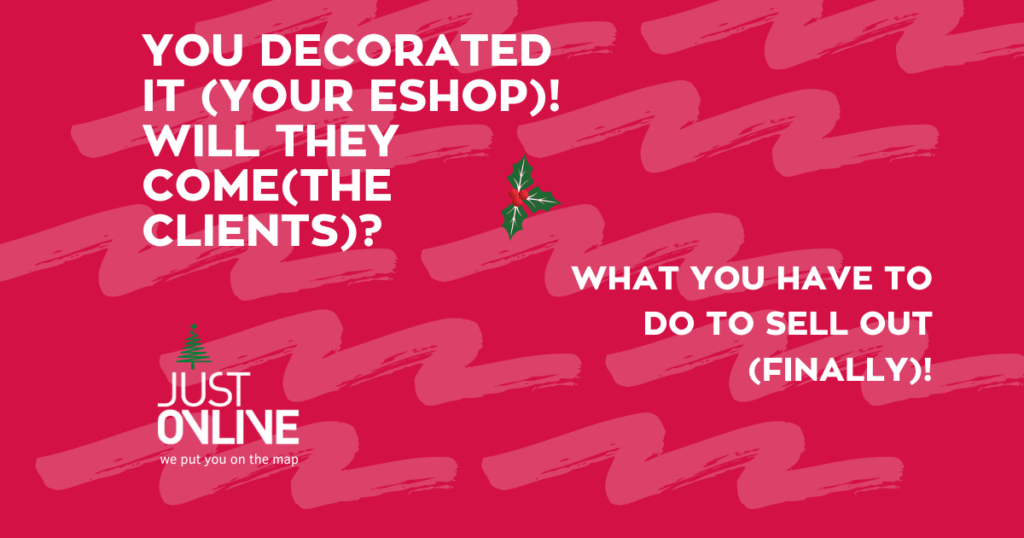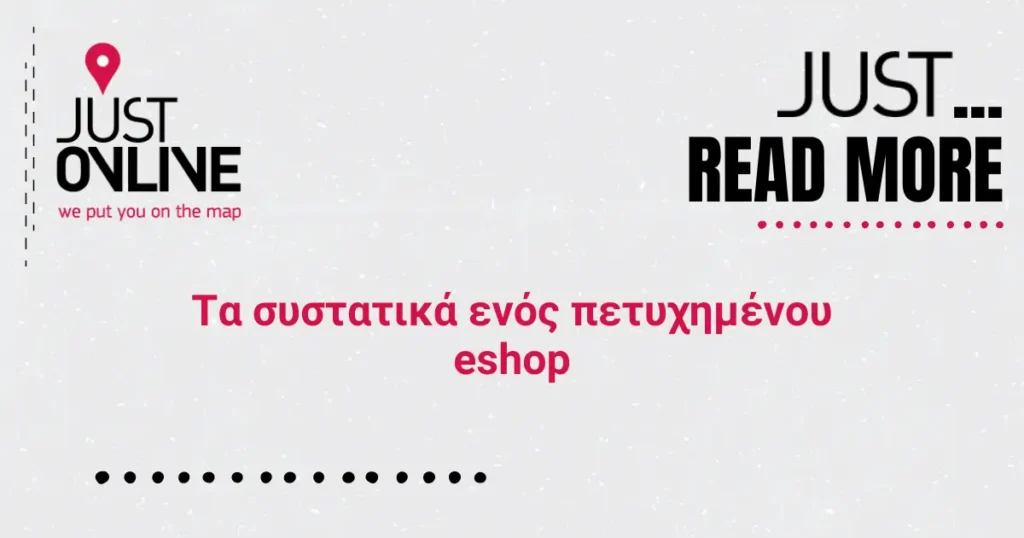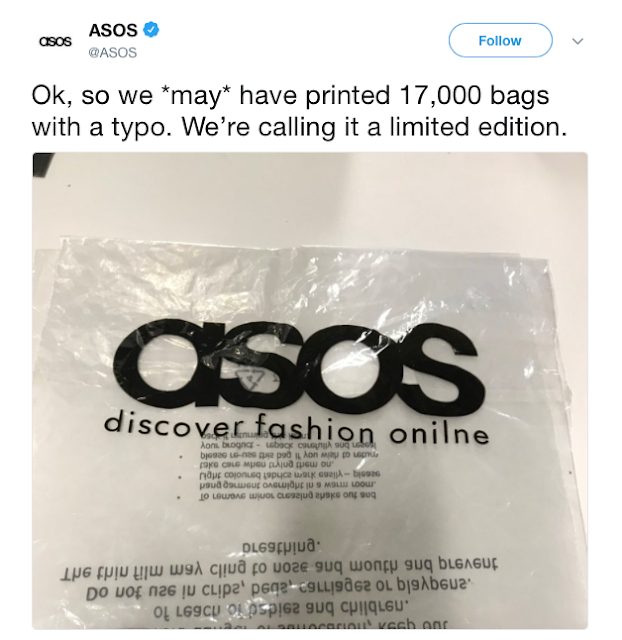
What is rebranding?
Well, it is simple: it is the “reformulation” of our brand.
Think of it as reintroducing a (partially or completely) different you. Υou’re just doing it for your brand or your entire business.
What is NOT rebranding?
Rebranding is NOT changing the logo. Neither does the saying that goes with it. Nor the change in the color palette we use in our logo, cards and site.
Rebranding is something deeper because it stems from the need to reintroduce ourselves to the world: to our customers, to our potential customers and to society because we have something different to tell them about our products and services, our values, our scope and the way we operate as a brand and as a business. Because we are now different than before.
When do we need rebranding?
A brand needs rebranding when:
- It wants to appeal to a different audience than the one it addresses today
- It is “the same” in the minds of its customers as its competitors and wants to stand out
- It has evolved into what it offers and its current image does not communicate this to its audience
- Its image is so old that it does not express the wants and does not solve anyone’s problems
- It has been acquired and has become part of a larger organization that has a wider range of products and services and appeals to a larger audience
- Her image has been irreparably damaged for some reason
- Its customers are looking for solutions in completely new products and services
When do we NOT need rebranding?
We do NOT need rebranding when:
- We just want to make some changes to the logo
- The marketing manager is changing and wants to “leave his mark”
- We face a crisis we can manage
- Sales are not going well and we haven’t exhausted other solutions that might be a better fit as a solution
What are the steps of Rebranding?
- Evaluation of the existing brand
Before doing the rebranding actions that we will describe below, we should do an internal brand audit to see “where we are” as a brand today. And when I say “where we are” I mean in the minds of consumers.
This is very important, because it will show us if it is possible to “go” where we want with the rebranding. If in the minds of consumers we are an indifferent and relatively unknown sports shoe brand we cannot suddenly or even in a short period of time become a competitor to Nike or Saucony.
The critical question we have to ask is “how do we want our customer to perceive us tomorrow”?
- Decision on the audience to which we want to address (target group)
After we have done the brand audit and seen the strengths and weaknesses of our brand, the next step is to decide which audience we want to address.
Here we should create the so-called buyer personas which are a detailed description of the buyer to whom we will address.
The description of a buyer persona includes:
- Demographics
- Psychographic data
- Lifestyle elements
- Problems / issues they want to solve
- Problems / issues they want to solve
- Media they watch
- Market Research
After deciding on the audience we will address, we should do a market research to see if this audience knows us and how it perceives our brand in relation to the competition we are going to have (don’t forget that we are going to rebrand, so change partially or even completely leave the market we are in).
- Competition research
A very important step, because it will allow us to better create / shape our competitive advantage.
Attention: here we are not only looking for the “tangible” elements of the competition: what is its product, its price and what are the distribution channels, but “how” it differs in the mind of the consumer from the rest of the competitors and how it is perceived by the prospective customer us.
As is often the case, a competitor does not have to have the best product to stand out in the minds of consumers.
- Restatement of our brand
In this step we enter, as you understand, the implementation of the rebranding. You should rephrase:
- Your vision. A company’s vision expresses why your company exists. Vision is your compass. In one sentence it should articulate your direction. Google’s vision is to “provide access to information with one click”.
Just Online’s vision is to pave the way for growth and success in every company, regardless of its size and to shine in the business world.
- Your mission. Your mission is how you will fulfill your vision. Netflix’s mission is to “entertain the world”.
Just Online is on a mission to help businesses create their own voice and image and stand out in their industry with online & offline tools.
- The values of your company. Values work both ways. We want them to reflect the values of our audience but also to project our values to the audience we want to have as customers. For example, Nike’s values are sustainability, diversity and social sensitivity.
At Just Online, we recognize our values as the essence of our action. We seek excellence and develop close relationships with our customers.
Innovation, creativity, continuous training and the flexibility to adapt our services to market changes and needs guide us in every aspect of our work to deliver the best possible result.
- Brand Positioning and Value Proposition. Some marketers treat these two concepts as one. But there is a slight difference.
Positioning describes how your brand differs from the competition. The value proposition is all the benefits, functional, emotional or even experiential that your customer gets from using your brand.
Just Online’s brand positioning is reflected in the profile of a 360 digital agency with knowledge and experience in integrated online and offline marketing processes.
Our Value Proposition is that our clients enjoy through a comprehensive range of services across the spectrum of digital and non-digital marketing, services that include research and implementation of digital and non-digital strategy to logo design, creation of corporate videos , photography and creation of product packaging.
When you have formulated all of the above it will be easier to rephrase:
- The voice, tone and personality of your brand
- Your motto (attention: motto, not moto), the Greek motto in your logo.
Our slogan, for example, was “We put you in the map” and it stated the benefit that a company would have by cooperating with us, which was to “enter” the new digital “map” that was being formed.
This slogan changes to “We make brands” because it reflects both the ability we have always had to create a brand from scratch but also the need – fortunately – of many companies to build their brand and not act as resellers of other brands.
- Designing the new image of your brand
Designing the new image of your brand (brand identity) is definitely the most fun and the most creative stage of rebranding and is definitely what comes to mind for most people when they hear branding & rebranding.
It’s the choice and configuration of
- The colors
- The logo
- The pictures
- The fonts
- The videos (product and corporate)
- Social media appearances and posts
- The site / eshop
- The advertisements
- The emails – newsletters
- The press releases
- The cards
- The product packaging
- The building / shops (interior and exterior)
Especially the logo change should stem from the need for our brand to convey the new values and the new vision and mission of our brand.
Also, the issue of changing the name is an important point that needs a lot of attention. We can change the logo without changing the name, but we can – if we have to – change both.
The key phrase here is “if necessary”. History shows that many name changes of huge companies with great recognition and many decades of presence were done to forget the name that accompanied some scandal or because there was a merger or acquisition by another, even bigger company.
Another, not so blatant case is that of Dunkin Donuts which became purely Dunkin because from a company that made donuts it became a food company in general.
Our advice is that it takes a lot of study, research and discussion before a company decides to change its name.
Before continuing with the last steps of the rebranding I would like to make a small parenthesis.
As you will have noticed, however, in the description of the steps so far there is a connection to one another and a logical continuity.
Think about it: if you don’t do your brand assessment, target audience research and competition research, rebranding can end up with a new brand that either won’t interest your audience or is too similar to the brand a competitor.
If you also don’t reformulate the “soul”, the dna of your brand and the message you want it to convey, no matter how nice a logo you create, it will just be something beautiful, but empty of meaning for your customer.
- Creation of brand guidelines
Those who have worked in multinationals are certainly familiar with some multi-page dossiers that include detailed brand guidelines. So detailed that it is difficult for anyone in the company who has to do with its communication, to deviate from the instructions of the marketing department on how the brand should “speak” to the audience it addresses through a simple email to an advertisement, a post on social media, a sign on the building or (VERY important) through the product packaging.
Whether you are a company of 5 people, or 50, whether you have 2 to 3 external partners or many more, everyone should know your brand’s vision, mission and values, the message you want to convey and how these are expressed. ” through the “materials” that build your new image.
- Introducing your new brand
The introduction of your new brand should start internally, with your company’s employees and partners.
You should tell them what is changing, why you decided to rebrand, to which audience you are now addressing, what are the new values of your brand and how this will be reflected in communication, in print, verbally and through images and videos.
They should be followed by press releases and a press conference with invited not only the journalists but also the customers, partners and employees of the company.
It goes without saying that the rebranding should also be communicated with a series of articles on your company’s blog, changes to the site’s texts and posts (text, images and, why not, videos) on social media.
- Monitoring the implementation of the rebranding
Follow-up starts internally, from embedding the new brand culture among staff, and then externally, among our partners and customers.
Also internally, all visual management & digital & non digital assets should be checked (see step 6). For example, all our digital (eg our site) and non-digital (eg our physical store) assets have our new logo. Is our new brand orientation reflected in our social media posts and ads?
As you will find out, the rebranding process requires thought, method and plan.
If it is done with the right criteria and with a well-organized implementation team, it will only bring benefits to your business.
Good luck!
Image by storyset on Freepik






